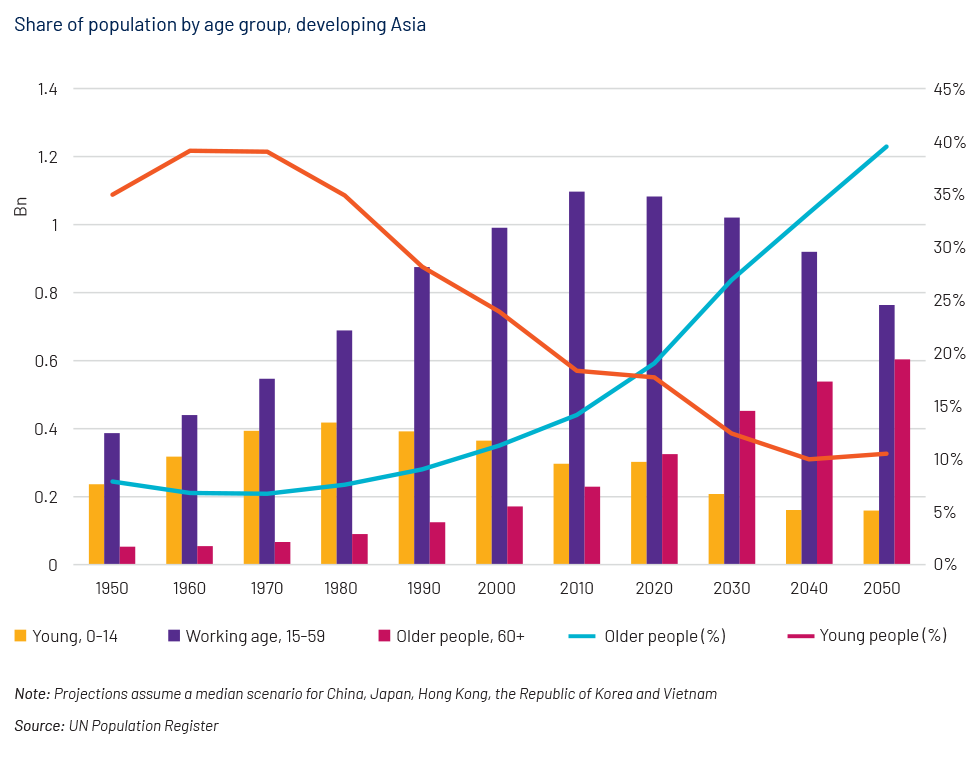Greying Asia – emergence of the senior housing market
Social Bonds : A significant financing opportunity amid the pandemic
Introduction
There is a shift in global demographics, particularly in East Asian and Southeast Asian economies. The number of elderly individuals in Asia Pacific is expected to more than double – to approximately 1.3bn by 20501 from 630m in 2020. The share of the population aged 60 years and above is likely to increase to 25% by 2050 from 13.6%1 in 2020. The “oldest old” (those aged 80 and above) are expected to make up around one-fifth of the entire older demographic by 2050. While high-income countries such as Japan already have large elderly populations, low- and middle-income countries are now experiencing the greatest changes, with two-thirds of the world’s elderly expected to live in these countries by 2050. This sharp increase has sparked significant interest in the nascent senior living market in many economies. This insight paper deep dives into the emergence of the senior housing market in Asia, and the factors favouring its growth

Factors favouring senior housing development
Senior housing is designed to address the unique needs of older adults. Unlike typical residential properties, these communities offer features such as enhanced accessibility, safety measures and community-focused amenities.
As Asia experiences an unparalleled demographic transition, demand for senior housing developments has increased.
Rapidly ageing populations, supported by longer life expectancy Asia’s population is ageing more rapidly than that in any other part of the world, with a significant rise in the senior population in recent decades; this is expected to accelerate.
Government initiatives and other developments in the senior living space Many Asian governments are recognising the need to support their ageing populations and are implementing policies to encourage the development of senior living facilities. This includes providing incentives for investors and developers and establishing regulations to ensure the quality of care.
Major challenges in senior housing
The senior housing sector faces several challenges, including a rapidly growing elderly population that requires consistent supply to meet increasing demand, cultural resistance due to traditional multigenerational living norms and regulatory gaps with inadequate policies and support frameworks.
Conclusion
Demand for senior housing in Asia is likely to increase significantly over the next few decades due to demographic shifts driven by an ageing population. Overall, the outlook for the senior housing and care sector in 2025 is promising. Strong demographic growth, robust demand and limited new supply are expected to enhance operational and financial performance. While challenges persist for some communities, the sector’s fundamentals remain strong, positioning it for continued growth and attracting increased investor interest in 2025.
